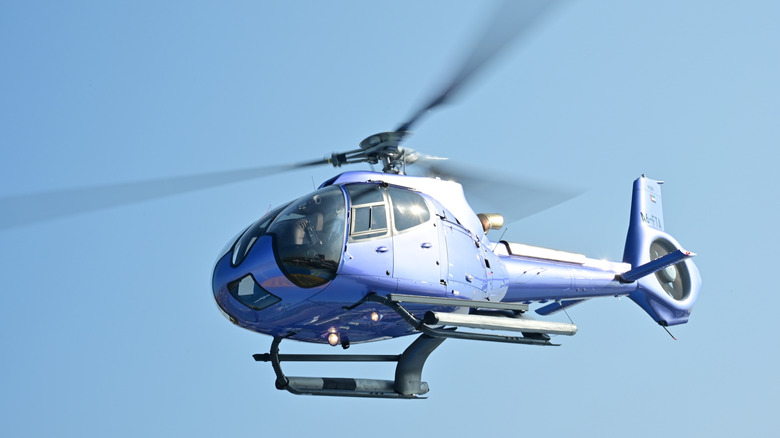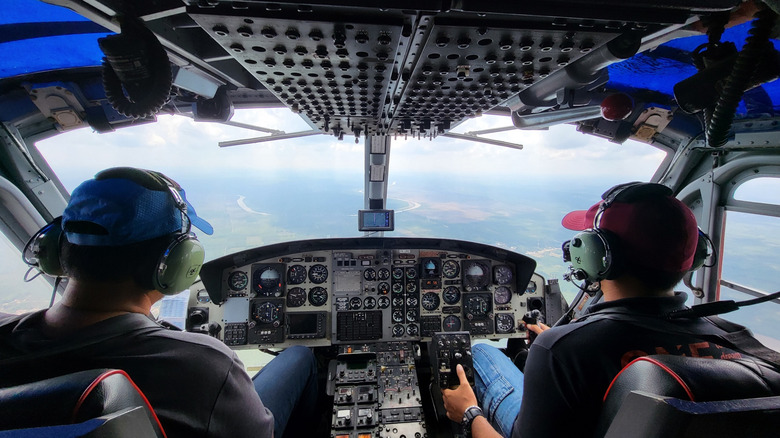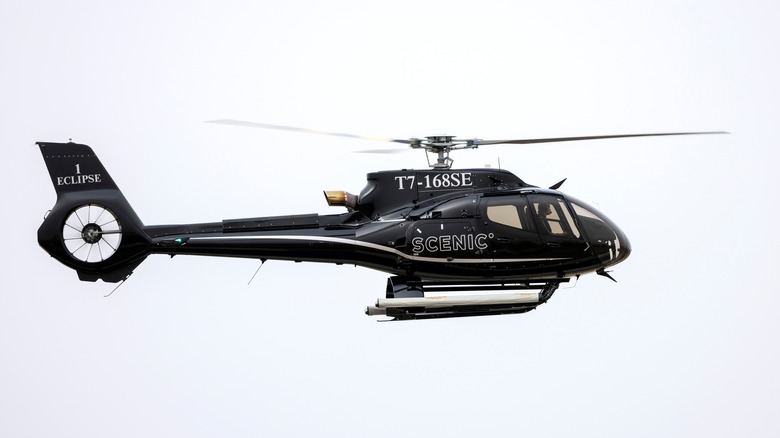Do Helicopters Have Autopilot?
When most people hear the term "autopilot," the mental image that follows is that of two pilots sitting in a cockpit, sipping coffee while the plane does all the work. Helicopters might seem more involved, so many would assume that they don't have autopilot — but they do. However, helicopters are governed by completely different physics and controls, meaning their version of autopilot is more of a behind-the-scenes assistant rather than the star of the show.
At the center of it all are various kinds of autopilot systems, such as automatic flight control systems (ACS). These systems are similar to electronic stability control and cruise control in a car; they're your invisible friends, helping you keep everything under control. They perform tasks such as fine-tuning the helicopter's movements and altitude in real-time, making flying easier, which is useful in high-pressure flights like extractions or military operations. It's merely taking over the pressure, not the job.
The way these systems allow pilots to just breathe a little is what makes them so valuable. Even some of the most iconic military helicopters utilize autopilot systems. Instead of the constant micro-correction, pilots can focus on navigating small spaces, dealing with radio calls, and coordinating ground crews. When the margin for error is razor thin, that type of support goes a long way, especially during long-range helicopter flights.
How does autopilot work on a helicopter?
The autopilot you find in helicopters is not a linear one-size-fits-all system. There is no one kind of system that is doing all the work — it's a mix of tools working behind the scenes. Components like the digital flight control system (DFCS) and digital flight guidance system (DFGS) manage different levels of input. At the center of it all is the flight director (FD), which acts as the brain, taking in data about the helicopter's current altitude, airspeed, and heading, and then responding with steering commands to stay on course.
At the simpler end, some systems are just there to keep things stable. They'll hold the helicopter steady in pitch, roll, and yaw. Something like a yaw damper helps cut down on the helicopter's side-to-side fishtailing, smoothing out the ride. Add a stability augmentation system (SAS) to the mix, and now you've got real-time corrections for things like sudden wind gusts. It's not fully controlling the helicopter, but it's a great helping hand in tricky scenarios.
Then you have the more advanced setups. These are categorized by how many flight axes they can control, starting with one for basic roll correction, and going up to three, or even four, axes for complex maneuvers like auto-hover. The more axes, the more the system can do. A three-axis autopilot system handles pitch, roll, and yaw, alleviating some of the pressure of the pilot in high-stakes situations.
Airbus and the future of autopilot technology in helicopters
Some technology remains unchanged for years, such as the string on the front of a helicopter windshield, but autopilot keeps evolving. One company pushing the boundaries of helicopter automation is Airbus. Its H130 model is being built with a cutting-edge 3-axis autopilot system, and it's more than a subtle software tweak. The system can support the pilots from takeoff to landing, including hovering in tight spots and cruising.
The upgraded H130 system comes with a new integrated automated safety net that prevents pilots from accidentally pushing the helicopter past the limits of its capabilities. In search and rescue or medical missions, which are highly stressful, this feature can be a critical safety intervention for both the pilot and passengers.
What makes this system interesting is how it chooses to blend technology with human engagement, rather than moving towards full autonomy. Airbus is focused on creating new technology and tools to reduce the workload and stress of the pilots instead of replacing them. For those piloting the H130, that means less fatigue, better mission readiness, and higher safety standards, all backed up by the latest helicopter autopilot technology on the market today.


